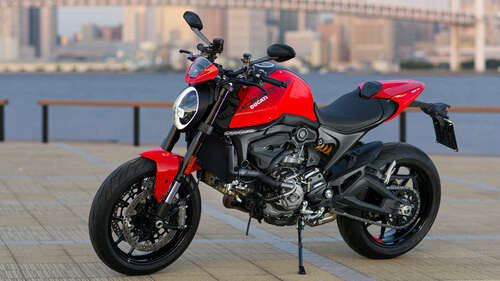
A relatively entry-level machine, the Monster is, at its heart, a no-frills bike. The original Monster 900 (aka M900) was powered by an air-cooled L-twin engine producing 73 hp from a 904cc engine. Manageable enough for beginner riders but powerful enough to keep experienced riders entertained, the Monster 900 offered great balance. And, it turns out, balancing power and rideability is an excellent formula.
The original designer of the Ducati Monster, Miguel Galluzzi, once said, “All you need are: saddle, tank, engine, two wheels and handlebars,” and you’d be hard-pressed to disagree with him. The Monster followed that formula, with a simple design from a distance and a simple user interface. There’s a large and easily visible gauge cluster, a few warning lights, and not much else to distract the rider. Accessibility was part of the design as well, with features like a quick-release fuel tank mechanism that allows for access to the battery, air filter, and fuses.
Over the next few years, Ducati expanded the Monster lineup by adding 600cc and 750cc models and some special edition trims for the M900 called the Monster Cromo and the M900 S. In 2000, the Monster got some significant updates (fuel injection and a digital dash), but the big change came in 2001 with a new 916cc engine and water cooling instead of air cooling.

